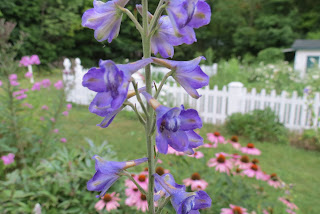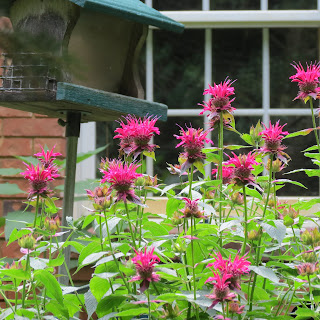As part of the Midwest Native Plant Conference, Jim Davidson and I led a field trip to two of Ohio's Natural Areas and Preserves, Smith and Bigelow Pioneer Cemeteries.
These historic relics mark time from white settlement of Ohio, gravestones mark the lives of our early pioneers. Life was hard on these plains, their short lives are inscribed on numerous family plot markers, many engraved with multiple children's names and dates.
Weathered stones still stand upon these two small plots of land. The soil here has never been tilled; the original flora from pre-settlement still remains. Standing like islands within fields of corn and beans, native grasses and flowers bloom all summer long.
Shaded by giants oaks, a peace and solitude transcends the quiet paths, only bird song and insect calls to disturb the settler's sleep.
This year's drought has stunted the grasses, but a sea of white Flowering Spurge, Euphorbia corollata dances in the sunlight and wind.
The Purple Coneflowers, Echinacea purpurea are under siege. Many of them have been stem-chewed, causing the flower head to dangle in death's repose.
A closer look at our Prairie Dock reveals the culprits, wee beasties: Sunflower Head Clipping Weevils (Haplorhynchites aeneus) as seen in this photo. Their eggs, laid in the flower heads, will hatch about the same time the flower finally drops to the ground. To control this pest in your prairie or garden, simply remove all the clipped flowers, and you will be removing their eggs. OSU's Buckeye Yard and Garden has a complete article on them here.
To see the cemetery in a previous year's post, go here.
From the giant oaks to the tiniest weevils, these prairies are important remnants from our past which need to be protected and preserved. Please go to Ohio Natural Area and Preserves Association and volunteer today.


.JPG)

.JPG)
.JPG)
+Weevils.JPG)
.JPG)
.JPG)



































.JPG)
+Louisiana+Waterthrush.JPG)
+Canada+Lily.JPG)
+Hapola+moth.JPG)




